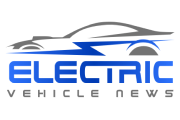
What Is Electric Vehicle?
The adoption of electric vehicles (EVs) will change the way we drive in the near future. They can improve safety and convenience while reducing environmental impact. However, to make EVs a mass-market phenomenon, we need to make sure the infrastructure for charging them is in place.
A battery electric vehicle has low operating costs due to its fewer moving parts and is extremely environmentally friendly due to the fact that it uses little or no fossil fuels (petrol or diesel). EVs often used nickel metal hydride or lead acid batteries, but lithium ion batteries have come to be the standard for modern electric vehicles. These batteries have a long lifespan and a high capacity for retaining energy. With a self-discharge rate of just 5% per month, they are ideal for battery electric vehicles.
Electric Vehicle Charging Infrastructure
As a first step, most drivers charge at home or at fleet facilities. By offering more flexible charging options at common locations, charging stations at workplaces and public destinations can bolster market acceptance. There are a growing number of electric vehicles in use, so it is imperative that a robust network of charging stations is available both for consumers and fleets. Users can use the Alternative Fueling Station Locator to find charging stations, both public and private.

As the EV ecosystem evolves, so does the EV charging industry, but there has been an increase in improvements over the last few years despite the challenges associated with charging infrastructure. This is still a lucrative field for technological advancements and innovations. Let’s take a look at the current trends in this field and see what technologies could disrupt the future.
It is evident that EV charging technologies are moving beyond the niche market and into the mainstream. Upgrades and innovations in the field are all geared towards building a reliable, scalable, and cost-effective charging infrastructure.
EV Charging Technology: What Is Trending in 2022?
In the last few years, electric cars have made a significant impact on the global automotive industry. The market for electric vehicles is expected to continue growing in the coming years, despite the fact that many obstacles still need to be overcome before we can realize their full potential. A number of factors will contribute to this, including:
An industry standard, called the Open Charge Point Interface (OCPI) protocol for charging infrastructure, has been adopted by the industry with the following hierarchy: location, EV supply equipment port, and connector for charging stations. The Alternative Fuels Data Center and Station Locator use the following definitions of charging infrastructure:
- Station Location; EVSE Port & Connector
A station location is a location where some or all of the EVSE ports are installed at the same address. Examples of stations include parking garages and mall parking lots.There can be one or more EVSE ports in a charging post. A charging post can have one or more EVSE ports, but it only charges one vehicle at one time despite having multiple connectors.The connector is the thing that plugs into a car so it can be charged. Multiple connectors and connector types (such as CHAdeMO and CCS) can be connected to one EVSE port, but only one vehicle can be charged at one time.
- Smart EV Charging
There were many random buttons and cables on the first EV charging devices in the 18-19th century. In the course of time, technology advanced so rapidly that today’s EV charging devices are small and minimalistic, but they are still smart and intuitive enough to make decisions on their own. Its seamless communication capabilities with an electric vehicle, its driver, the grid, and charging stations make it possible for EVs to operate seamlessly. It is useful for electric vehicle drivers if their chargers can indicate when the energy is at its lowest cost. Most often, the price is low at night, which is why smart EV chargers must also have a scheduling feature so that charging can only be completed at specific times.
This type of feature saves both time and money for the driver without any additional intervention. The TeltoCharge app makes EV charging simple, so drivers only need to plug in the car, set the charging, and be done. As a must-have feature that will lead the development of next-generation EV chargers, smart EV charging is no longer a trend that helps companies differentiate their products, but a must-have feature that will lead the way. In addition to improving customer experience, smart features make charging EVs more affordable, efficient, and environmentally friendly.
- Dynamic Load Balancing
As part of smart charging, dynamic load balancing ensures safe charging and optimal energy distribution, which are two features closely related. Most people use many electric appliances during the daytime that consume a considerable amount of energy, so enabling EV charging when others are active can be risky because the property’s electrical capacity might be overloaded.
Innovative EV chargers now offer dynamic load balancing, which is the perfect solution. In addition, an electric vehicle charger reads the data from a smart meter connected to the charger and calculates the power consumption of the property in real-time; an EV charger then reacts to the data in real-time. Then, instantly reacting to current changes, the maximum charging power is automatically set.
- Bidirectional Charging
In addition to charging electric vehicles, it can also make the batteries generate electricity for the grid at the same time. The number of EVs on the road during the day is only 4% according to Virta. However, the concept is quite complex and requires technological innovations, even though the V2G technology allows it to be used as a reserve almost 24/7 instead of just a few hours while it is being charged.
- Wireless Charging
Electric vehicle drivers just align their vehicles with a wireless charging pad on the ground to recharge their battery, using an electromagnetic field to transmit energy between the charger and the car. Wireless charging technologies for EV batteries are being developed by a variety of automakers, including General Motors, Nissan, Volvo, and Tesla. Wireless charging is also being promoted by these giant automakers.
Top 10 Leading Companies in EV Charging Infrastructure Market
- Tesla, Inc.
- ABB
- Eaton Corporation
- ChargePoint, Inc.
- ClipperCreek, Inc.
- General Electric
- Honeywell International Inc
- Pod Point
- Leviton Manufacturing Co., Inc.
- Rittal GmbH & Co. KG.
The Bottom Line
To conclude, the industry for electric vehicles is undergoing a major restructuring, which is making it difficult for traditional car companies to adapt to this new situation. Meanwhile, start-ups and entrepreneurs are gaining an edge in the market, and the government is also stepping in to support the development of the sector.
A subsidy is being provided to support the creation of charging stations and infrastructure development. This will result in an increase in the number of electric vehicles on the road, as well as allowing India to become an important player in the global electric vehicle market. New technologies will revolutionize electric vehicle charging, as well as support new regulations regarding charging stations.






